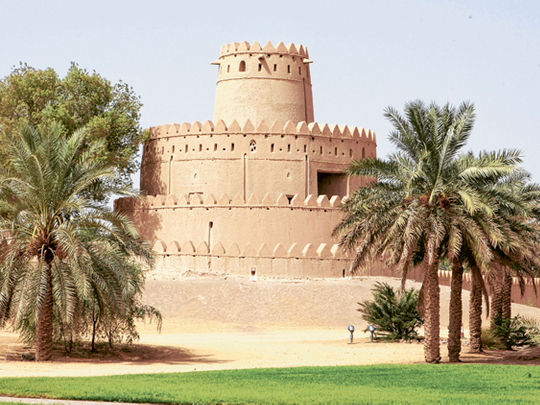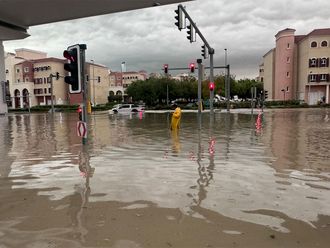
Al Ain: When Jahili Fort was built being in the 1890s, it was the most turbulent period in the history of the Buraimi Oasis, which today houses two cities - Al Ain and Buraimi.
Being an illustrious symbol of history, the fort today is an invitation for visitors to explore Emirati public life and its political, social and cultural aspects as it were when its foundations were laid.
Historians say life was difficult in the oasis, which acted as a border between the Sultanate of Oman and Abu Dhabi. Military invasions and threats from the Wahhabis of Nejd (now in Saudi Arabia) were always imminent.
Shaikh Zayed Bin Khalifa Al Nahyan (Zayed the Great - 1855-1909) of Abu Dhabi and Sultan Faisal Bin Turki, the then Sultan of Oman, took every possible measure to safeguard the oasis and its people. The feuds of local tribes also added up to the already difficult political and military situation.
Shaikh Zayed, who was a man with extra-ordinary capabilities and wisdom, had a strong alliance with Muscat that successfully thwarted several previous Nejdi attempts to occupy the oasis. The alliance was forged years before the fort construction began by Sultan Azan Bin Qais of Muscat, who handed over the hold of Buraimi to Shaikh Zayed for the protection of Oman’s western border.
Sultan Azan Bin Qais was killed in 1871 in a battle with Syed Turki, Chief of Sohar, who later became the Sultan of Muscat. Turki and his son Faisal, when they acceded to the throne, also continued the same arrangement for Buraimi Oasis with Shaikh Zayed. The threat of Nejdi invasion and political turmoil continued and the British also played an active role in it through their colonial rule in India.
The oasis was famous for its fertile land, date palms and underground water channels called Aflaj.
A number of Bedouin tribes lived in the oasis with occasional feuds and fighting. In mid-1880s, a war broke out between the Dhawahirs of Buraimi and Bani Yas tribes. Shaikh Zayed, however, won the hearts of Dhawahirs, making them his strong allies in the later years.
The villages of Jimi, Qattara, and Hili were occupied by Bani Yas tribes such as Hinawi. Another significant tribe - Naim from the powerful Ghafiri tribes - controlled the Buraimi Fort and a number of areas in and around Buraimi.
In the later years, a feud erupted between the Bani Yas and Naim, which flared with the support of other neighbouring tribes. A war began, and lasted several years. In the meantime, Saud Bin Harar captured the village of Ain with the help of Naim. The Bani Yas and Naim tribes, however, managed to codify a balance of power in 1889, putting an end to years of bitter acrimony.
In 1891, Shaikh Zayed entered Buraimi with the help of Shaikh Hasher Bin Maktoum of Dubai and retook the village of Ain from Saud Bin Harar. The same year, he started building Jahili Fort along with a network of aflaj to irrigate the date palm oasis. His sons cultivated date palms in the nearby areas that consolidated their hold.
The construction of the fort was thus a strategic move by Shaikh Zayed towards peacekeeping in an area perpetually troubled by tribal feuds.













